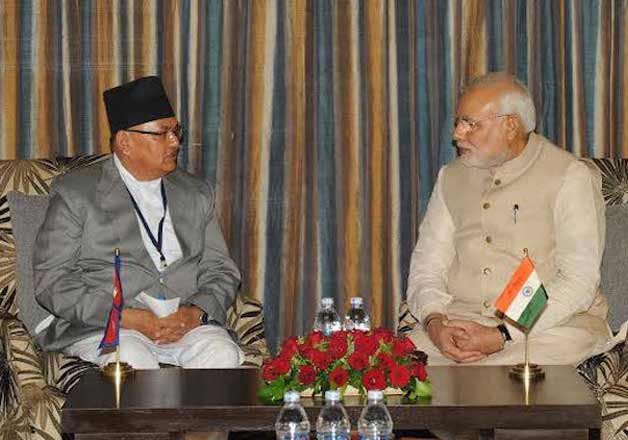Desperation can make even the wisest of men, and women, lose control of their faculties. And certainly no one will accuse Nepal Prime Minister K.P. Sharma Oli of belonging to that special category, at least not from the way he has been trying to destroy his country’s relationship with India, out of sheer desperation to cling on to his post. Ever since rumblings started in his party over him holding on to two posts, party chief and Prime Minister, Oli has thought of tiding over this “hiccup” which is threatening to become a breach, by whipping up nationalist sentiments by portraying India as the enemy—so according to him, anyone trying to replace him is pro India and thus anti Nepal. The latest in Mr Oli’s anti-India arsenal is the claim that Lord Rama is Nepali and Ayodhya is in Nepal. Perhaps “madness” will be too simple an explanation for Mr Oli’s flight of fancy, for there is too much “method” to it—as well as instigation by the Chinese. The attempt is not only to stoke Nepali pride and nationalist sentiments but also to drive a wedge between the two countries that may be separated by political geography but share civilizational roots—both Hindu and Buddhist. It is akin to hitting at the root of Hindu faith and questioning one of the cornerstones of Hindu beliefs. But rewriting beliefs may not be as easy as redrawing his country’s map to show Indian territory as Nepal’s, as the pushback will come from within Nepal itself. From all appearances, the pushback has already started. Certainly a step such as delaying the citizenship of Indian women married to Nepalese citizens by seven years is not going to make him popular in his country, considering intermarriages are common between the two people and the international boundary is, in effect, an imaginary line when it cuts through a border village. Too many Nepalese live and work in India for India-Nepal relationship to be allowed to be held hostage to one man’s short-sightedness. Even if China may have overtaken India as the highest source of FDI in Nepal—90% of Nepal’s FDI is from China according to the Chinese press—China will not welcome Nepal’s citizens to work and live there. In fact, the reverse is likely to be true, with the Chinese coming by the droves and settling down in Nepal under the pretext of building infrastructure, now that Nepal is a part of the BRI. In fact, even the BRI is unlikely to give an alternate window to the world to a landlocked Nepal, when Kolkata port is at a relatively short distance of 800-odd kilometres, compared to any other port that the Chinese may offer to Nepal to transport its goods. Although Prime Minister Oli’s foreign policy advisers have been saying that his government is looking at being close to both India and China, in reality, Mr Oli has aligned himself so closely with China that even an “anti-India” Pushpa Kamala Dahal “Prachanda”, who was responsible for letting China get a foothold in Nepal, is appearing positive by comparison to India. China’s influence on Nepal has reached such proportions that all its political parties, its military, the intelligentsia, are in the thrall of Beijing. It will not be easy to wean the Nepalese elite away from China’s grip. The situation is such that schools in Nepal have started making learning Mandarin compulsory, after China promised to pay their teachers’ salaries. In other words, China has started micro-managing Nepal’s domestic affairs, and the Nepal government is allowing this to happen, so dazzled it is with the promise of Chinese billions, even though most of the money is yet to materialize, with, to give an instance, not even a kilometre of railway line built to connect Tibet with this Himalayan country. Surely, Nepal realises that China may come with a benign face, but its actual interest is strategic—in this case making the whole of India’s northern borders restive and keeping India tied down, fighting one fire after another. Nepal just needs to take a look at countries that have become China’s vassal states, only to go bankrupt as they have fallen into debt traps and have been forced to sell off assets to Chinese companies. Or better still, it just needs to look at Tibet and Xinjiang to understand the fate that possibly awaits it. While India needs to be sympathetic to Nepal’s concerns, at least India is not a revisionist power, unlike China. India has not been grabbing Nepal’s territory, which China has been doing. One man’s insecurities cannot be allowed to hold India-Nepal relations hostage. This relationship transcends personality, geography and petty political interests.

